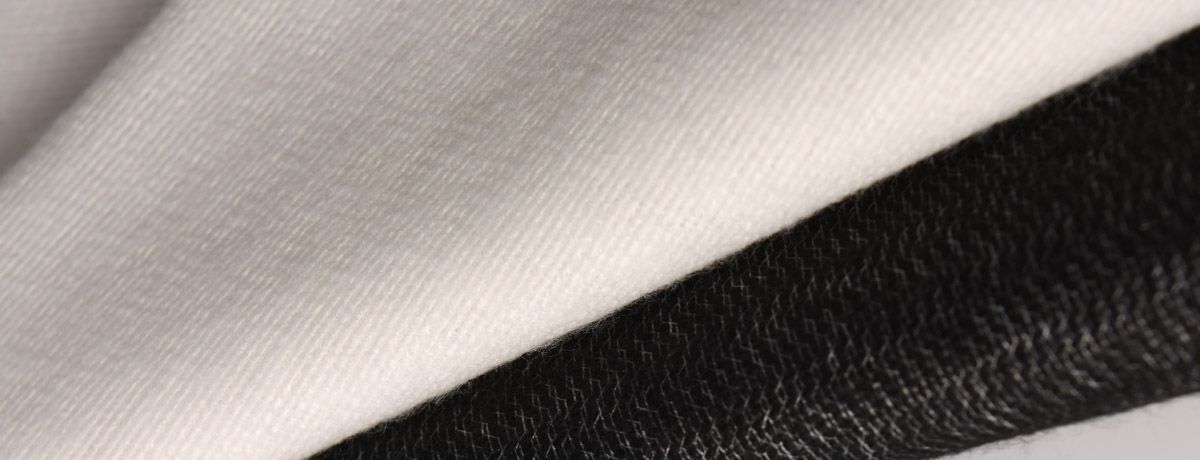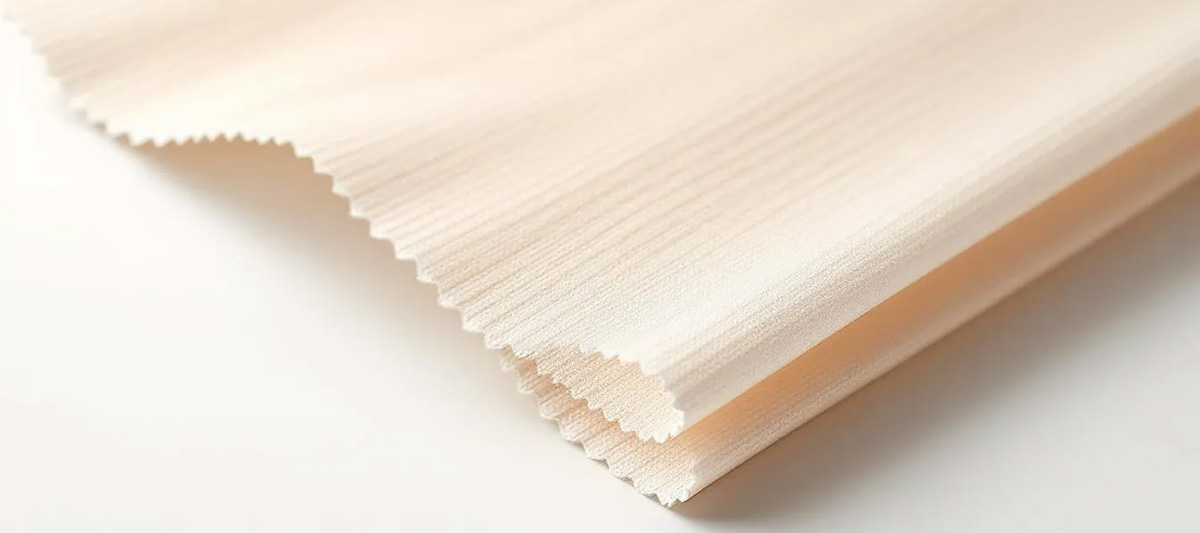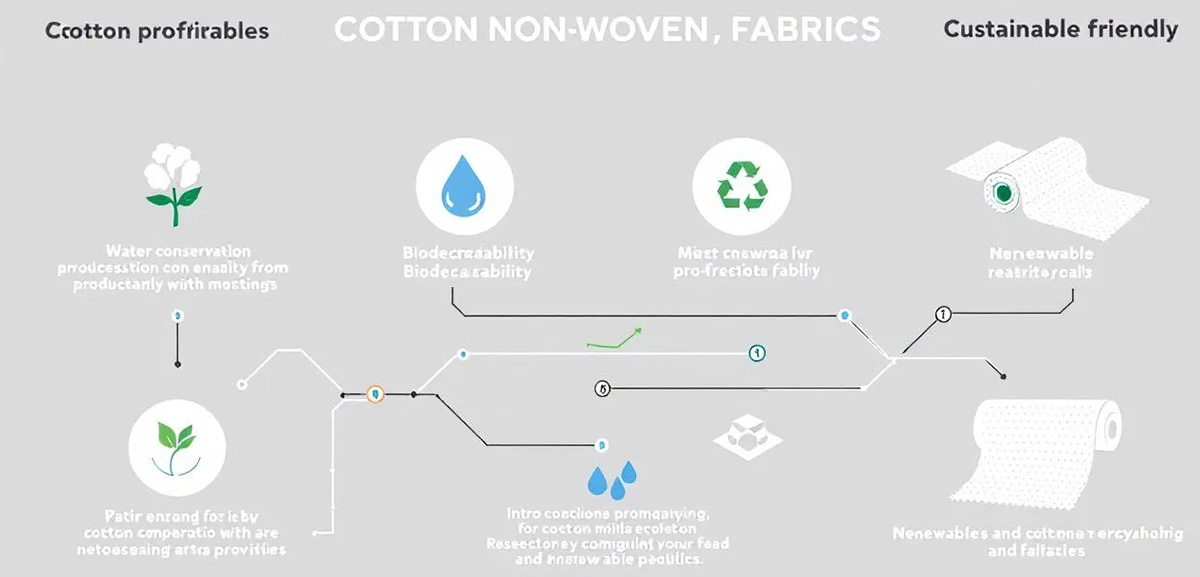High-Quality Cotton Nonwoven Fabric - Durable & Eco-Friendly

Cotton nonwoven fabric is a versatile material created by bonding cotton fibers instead of weaving them. This process makes the fabric durable, lightweight, and eco-friendly. It is widely used in medical supplies, hygiene products, and more. This article will explain what cotton nonwoven fabric is, its benefits, how it’s made, and its various applications.
Key Takeaways
-
Cotton nonwoven fabrics are lightweight, durable, and customizable, making them suitable for various applications such as medical and hygiene products.
-
The manufacturing process involves web formation techniques and bonding methods, which significantly affect the final properties and performance of the fabric.
-
Cotton nonwoven fabrics are eco-friendly, biodegradable, and produced using sustainable practices, positioning them favorably against synthetic alternatives.
Understanding Cotton Nonwoven Fabric

Cotton nonwoven fabric is a marvel of modern textile engineering. Unlike traditional woven fabric, which is made by interlacing threads, cotton nonwovens are produced by bonding cotton fibers together. This process results in a material that is lightweight, durable, and highly customizable. One of the standout features of cotton nonwoven fabrics is that they can be made from 100% cotton or blended with other natural or synthetic fibers to achieve specific characteristics. For instance, dental sponges often incorporate 100% organic cotton to emphasize purity and safety.
Another significant advantage of cotton nonwovens is their durability. Key benefits include:
-
They do not unravel like woven fabrics, making them easier to handle and use.
-
They can be produced in various weights and thicknesses.
-
They cater to a wide range of applications, from medical supplies to hygiene products.
Their eco-friendly nature also sets them apart, as they are biodegradable and manufactured using sustainable practices.
Key Features of Cotton Nonwoven Fabrics
One of the most appealing aspects of nonwoven cotton fabrics is their natural softness and breathable nature, making them ideal for products that come into direct contact with the skin. This includes items like feminine hygiene pads, baby diapers, sanitary napkins, and adult incontinence products, where comfort and skin compatibility are paramount. The hypo allergenic fiber nature of cotton nonwovens makes them particularly suitable for sensitive skin, which is why they are widely used in medical and personal care items.
In addition to their comfort, cotton nonwoven fabrics are also highly functional. They possess excellent moisture absorption properties, which is crucial for hygiene and personal care products. Furthermore, their eco-friendly nature contributes to environmental sustainability, as these fabrics decompose naturally, reducing the burden on landfills. These features make cotton nonwovens a blend of performance and environmental responsibility.
Manufacturing Process of Cotton Nonwoven Fabrics
The manufacturing process of cotton nonwoven fabrics is a fascinating journey from raw cotton fibers to versatile end products. The process starts with opening compressed fiber bales, followed by steps to form and bond the fibers into a cohesive fabric. The key stages in this process include web formation and bonding techniques. Each method used in these stages plays a crucial role in determining the final properties of the fabric.
Web formation techniques, such as carding and air-laying, are integral to creating a strong and uniform web of fibers. Meanwhile, bonding methods like mechanical, chemical, and thermal bonding ensure that the fibers are securely held together, enhancing the fabric’s strength and durability. The choice of bonding method can significantly impact the fabric’s performance characteristics, making it suitable for various applications.
Web Formation Techniques
Web formation is the first critical step in the production of cotton nonwoven fabrics. One widely used technique is carding, where cotton fibers are fed through a series of sawtooth wire-covered rolls. This process disentangles and aligns the fibers in the same direction, forming a strong and consistent web. Carding is particularly effective in creating webs with excellent fabric strength and uniformity.
Another popular method is air laid, also known as dry-laying, which uses air pressure to randomly arrange the fibers into a web. This technique results in fabrics that have uniform strength in all directions, making them highly versatile. Combining these web formation techniques allows manufacturers to tailor nonwoven fabrics to specific needs.
Bonding Methods
Once the web of fibers is formed, the next step is bonding, which ensures the fibers stay together to form a durable fabric. Mechanical bonding, for example, uses needle-punching, where barbed needles entangle the fibers, significantly enhancing the fabric’s strength. This method is particularly favored for applications requiring high durability.
Chemical bonding involves the application of adhesives to the fiber web, which are then heat to bond the fibers at their intersections. Although this method offers flexibility in design, it may introduce bonded chemicals.
Thermal bonding, on the other hand, blends cotton fibers with thermoplastic materials, which melt at high temperatures to bond the fabric together without the need for adhesives. Each of these bonding methods provides unique advantages, making cotton nonwoven fabrics versatile for various uses.
Hydroentanglement Process
The hydroentanglement process, also known as spunlacing, is a key technique in the production of high-quality cotton nonwoven fabrics. This method employs high-pressure water jets to entangle fibers, creating a fabric with enhanced softness and strength. As the water jets force the fibers to intertwine, the resulting fabric displays specific attributes such as increased durability and a pleasing texture.
After the hydroentangling phase, excess water is typically removed through mechanical rollers or hot air drying, preparing the fabric for subsequent use. This process not only improves the fabric’s physical properties but also ensures it is ready for further applications, making hydroentanglement a crucial step in manufacturing premium cotton nonwoven fabrics.
Applications of Cotton Nonwoven Fabrics
Cotton nonwoven fabrics are incredibly versatile, finding applications across various industries. Their customizable properties, such as absorbency and strength, make them suitable for a wide range of products. From hygiene items to medical supplies and industrial products, these fabrics meet diverse needs while maintaining high performance.
Suppliers of nonwoven cotton fabrics cater to industries such as medical, personal care, and industrial sectors, providing materials that are both functional and eco-friendly. This adaptability ensures that cotton nonwoven fabrics continue to be a preferred choice for many applications.
Hygiene Products
Cotton nonwoven materials are widely used in baby diapers due to their absorbent and soft properties. The combination of multiple nonwoven materials and additional components in disposable diapers ensures they meet the high standards of performance and comfort required by consumers. Feminine hygiene products also benefit from the use of nonwoven fabrics, which prevent leaks while providing exceptional comfort.
Moreover, cotton nonwoven fabrics are extensively used in personal care wipes, cosmetic wipes, and wet wipes due to their softness and absorbency. These properties make them ideal for daily use, ensuring skin compatibility and effective cleaning with baby wipes.
Medical Products
Nonwoven fabrics play a vital role in the healthcare sector, especially in the manufacturing of wound care products where protection and absorption are crucial. Surgical masks also utilize nonwoven cotton materials to provide barrier protection and comfort, ensuring the safety of both medical professionals and patients.
Antibacterial treatments, involving the use of nanoparticles or organic compounds, are applied to medical textiles to prevent infections. This makes cotton nonwoven fabrics essential in producing reliable and hygienic medical products.
Industrial and Home Textiles
In industrial applications, the durability of cotton nonwoven fabrics makes them suitable for products like filtration media and protective textiles. These fabrics withstand the demands of industrial use while maintaining their effectiveness.
For home textiles, cotton nonwoven fabrics are favored for their efficiency and disposability in products like cleaning wipes. Their eco-friendly nature also makes them a sustainable choice for both industrial products and home textiles.
Advantages Over Synthetic Fibers
Cotton nonwoven fabrics offer several advantages over synthetic fibers, particularly in terms of environmental impact and user benefits. Organic cotton cultivation avoids the use of synthetic pesticides and fertilizers, reducing its environmental footprint. Additionally, cotton fiber nonwoven fabrics are biodegradable and compostable, making them a pollution-free alternative to synthetic fibers.
In industrial applications, cotton nonwoven fabrics are favored for their durability and lightweight characteristics. Their strength, textured quality, and environmental sustainability make them a preferred choice for various home textile products as well.
Post-Fabric Treatments for Enhanced Properties
Post-treatment methods like spray, dip-coating, and pad-dry-cure are commonly used to apply functional agents to cotton nonwoven fabrics, enhancing properties such as flame-retardancy and antibacterial capabilities. Flame-retardant agents can be either inorganic or organic, with halogen-free phosphorus-based compounds emerging as effective alternatives due to their environmental safety.
Layer-by-layer deposition techniques allow for the application of alternating charged materials, improving flame resistance and antibacterial properties on cotton fabrics. Chemical grafting modification forms covalent bonds between functional agents and cotton fibers, providing superior durability compared to traditional finishing methods.
Conversion into Final Products
The conversion of cotton nonwoven fabrics into final products often involves simple processes like cutting and folding to achieve the desired sizes and formats. Manufacturers typically begin by cutting and slitting the fabrics into specific sizes for various products.
In some cases, nonwoven fabrics are folded and packaged, which is common for simpler products like wipes. Complex products, such as disposable diapers, may involve combining multiple nonwoven materials or components, resulting in items made up of numerous individual parts.
Sustainable and Ethical Production

Sustainable and ethical production practices are at the heart of cotton spunlace nonwoven fabric manufacturing:
-
The cotton used in cotton spunlace products is 100% pure and sourced from non gmo cotton seeds.
-
The cotton is grown using organic fertilizers.
-
These practices ensure the fabrics are environmentally friendly.
-
The fabrics are biodegradable and return nutrients to the earth.
-
This significantly reduces landfill waste.
Unlike synthetic fibers that can contribute to microplastic pollution, incorporate cotton and polyethylene decomposes naturally, reducing environmental impact. Choosing cotton products aligns with consumer preferences for sustainability, as many are willing to pay more for items made from natural fibers.
Wholesale Availability
Wholesale suppliers of cotton nonwoven fabrics offer:
-
Flexibility to cater to both small and large order needs
-
Diverse options in color, texture, and thickness, making these fabrics versatile for multiple sectors
-
Rapid prototyping and trial runs within weeks, enhancing their appeal to businesses, including nonwovens manufacturers.
For instance, MH has cotton nonwoven products available for wholesale, providing a variety of options to meet diverse customer needs. This ensures that businesses can find the right specifications for their specific applications.
Summary
Cotton nonwoven fabrics are setting new standards in the textile industry with their blend of durability, eco-friendliness, and comfort. From their innovative manufacturing processes to their wide-ranging applications in hygiene, medical, and industrial products, these fabrics offer numerous advantages over traditional woven textiles and synthetic fibers. Their biodegradable nature and sustainable production practices further enhance their appeal in today’s environmentally conscious market.
As we move towards a more sustainable future, the adoption of cotton nonwoven fabrics is poised to grow. By choosing these materials, businesses and consumers alike can contribute to a greener planet while enjoying the superior qualities of cotton nonwovens.
Frequently Asked Questions
What makes cotton nonwoven fabrics eco-friendly?
Cotton nonwoven fabrics are eco-friendly due to their biodegradability and the use of organic cotton, which is cultivated without synthetic pesticides or fertilizers, thereby minimizing environmental harm.
How are cotton nonwoven fabrics manufactured?
Cotton nonwoven fabrics are manufactured through web formation techniques, such as carding and air-laying, followed by bonding methods that can be mechanical, chemical, or thermal. This combination ensures the durability and functionality of the final product.
What are the applications of cotton nonwoven fabrics?
Cotton nonwoven fabrics are widely utilized in hygiene products, such as baby diapers and feminine hygiene items, as well as in medical applications like surgical masks and wound care materials. Their versatility makes them essential across various sectors, extending to industrial and home textiles.
What are the advantages of cotton nonwovens over synthetic fibers?
Cotton nonwovens offer notable advantages over synthetic fibers, including biodegradability and compostability, which contribute to their eco-friendliness and lower environmental impact. This makes them a more sustainable choice in various applications.
Are cotton nonwoven fabrics available for wholesale?
Cotton nonwoven fabrics are indeed available for wholesale, with suppliers offering a diverse selection of thickness, color, and texture options, along with rapid prototyping services.
Contact MH
MH offer cotton nonwoven fabric. Please contact us for more details or inquiries. We're here to help!


